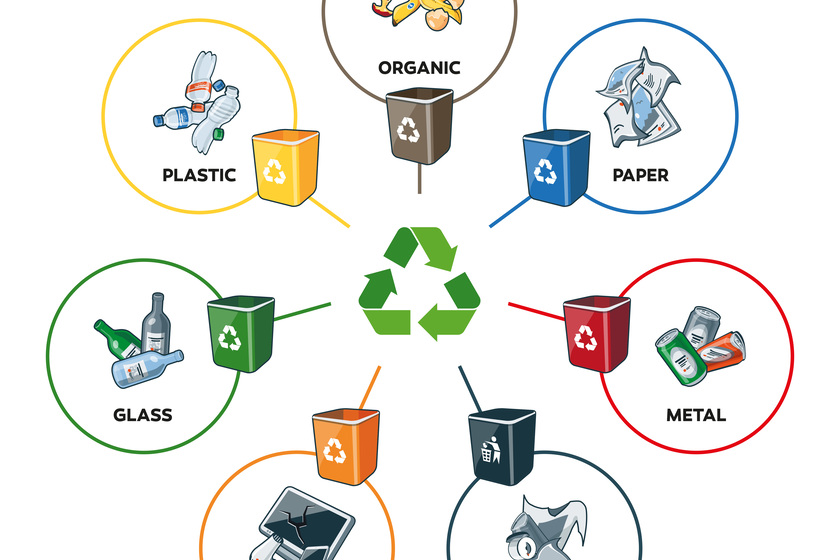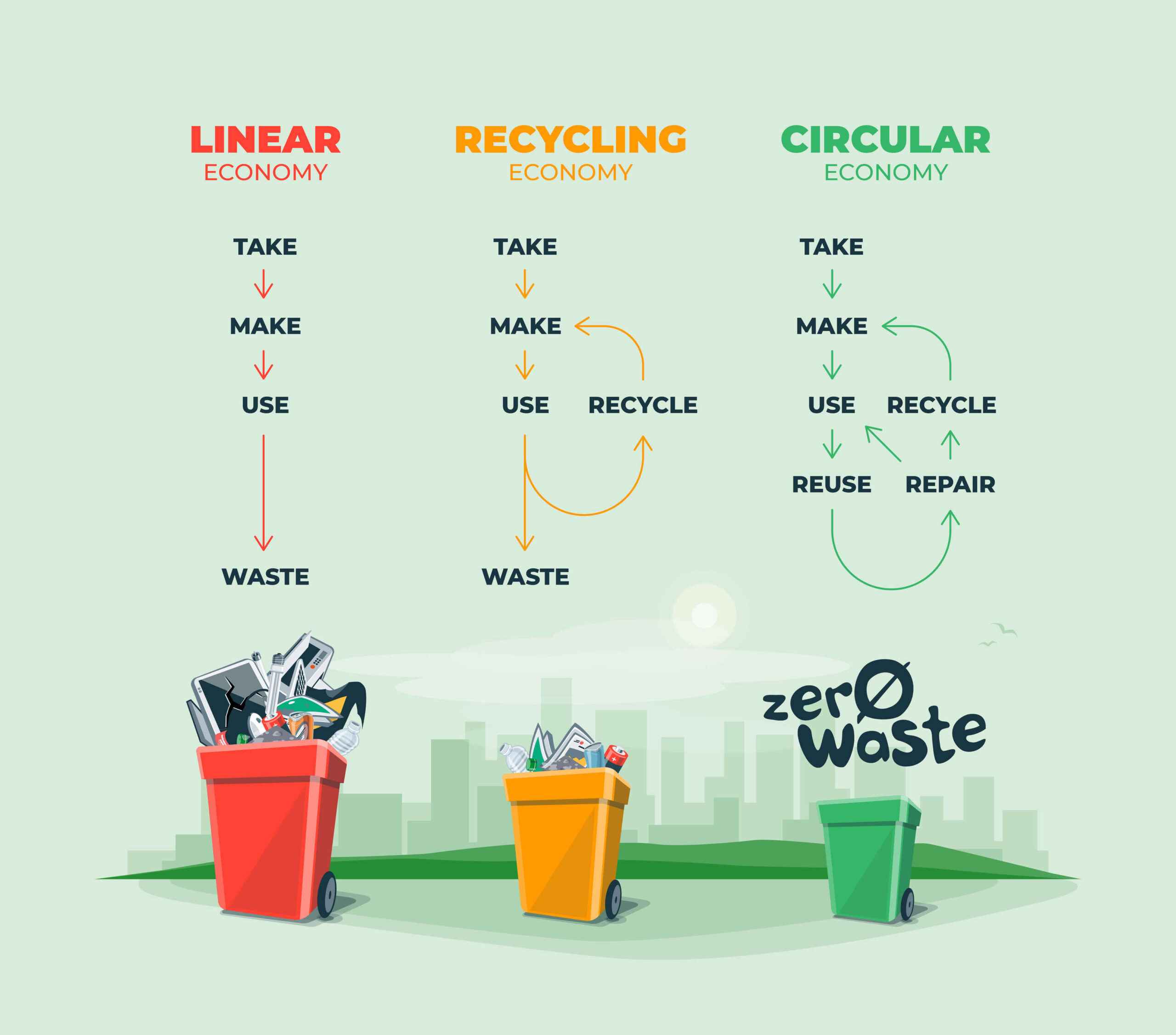Exploring Different Sorts Of Waste in Modern Waste Management Solution
The contemporary landscape of waste management includes navigating a complicated selection of waste kinds, each needing specialized handling and disposal approaches to alleviate environmental impacts. Community strong waste, unsafe waste, digital waste, and natural waste each existing unique difficulties and chances for resource recovery.
Community Strong Waste
Local solid waste, commonly referred to as household garbage or trash, encompasses a range of disposed of products generated by property, business, and institutional sources within a district. This waste stream commonly includes items such as packaging, food scraps, lawn trimmings, paper, plastics, fabrics, and discarded home items. The management of local strong waste is a crucial part of city preparation and public health, demanding effective collection, transportation, and disposal systems.
Efficient waste management systems are created to minimize environmental impact while maximizing resource healing. Composting organic waste, such as food scraps and backyard trimmings, not just reduces landfill usage but additionally generates useful soil amendments.
Towns need to additionally address the economic and logistical obstacles linked with waste administration. Carrying out pay-as-you-throw systems, boosting public awareness, and investing in modern technology can substantially improve waste diversion rates. By incorporating these practices, communities can cultivate lasting communities, lower greenhouse gas discharges, and save natural sources.
Hazardous Waste

Effective harmful waste monitoring entails numerous crucial steps: identification, disposal, therapy, and segregation. Segregation makes sure that hazardous materials are stored separately from non-hazardous waste to prevent cross-contamination.
Regulatory structures, such as the Resource Conservation and Recovery Act (RCRA) in the USA, give standards and requirements for unsafe waste management. Adherence to these laws, paired with improvements in waste treatment innovations, is vital in minimizing the dangers related to hazardous waste.
Electronic Waste
Digital waste, commonly referred to as e-waste, stands for a rapidly expanding obstacle in waste monitoring systems worldwide. This type of waste incorporates thrown out digital tools and tools such as smart devices, computer systems, tvs, and other electronic devices. The quick pace of technical innovation, combined with reducing item lifespans and consumer demand for the most recent gadgets, has exponentially boosted the volume of e-waste produced annually.
E-waste is specifically bothersome because of its intricate structure, commonly consisting of dangerous compounds like cadmium, lead, and mercury, which position considerable ecological and wellness risks if not appropriately handled. Conversely, e-waste likewise consists of beneficial materials such as gold, copper, and silver, which can be recuperated and recycled. The dual nature of e-waste-- both dangerous and important-- necessitates specific handling, reusing, and disposal procedures.
Reliable e-waste monitoring includes strict regulative structures, durable collection systems, and advanced reusing technologies. Public understanding and participation are important, as incorrect disposal methods, such as prohibited dumping and informal recycling, aggravate environmental contamination and carcinogen. Consequently, enhancing e-waste administration practices is essential for reducing eco-friendly effect and recuperating beneficial sources in a significantly digital world.

Organic Waste
Organic waste, making up kitchen scraps, backyard trimmings, and farming deposits, represents a substantial part of the worldwide waste stream. This kind of waste is biodegradable, meaning it can be broken down by bacteria right into easier organic compounds. In spite of its possibility for natural disintegration, inappropriate administration of organic waste can bring about damaging environmental effects, including the discharge of greenhouse gases such as methane, which add to environment adjustment.
Efficient management of organic waste is critical for decreasing these ecological effects (recycling lives services). Composting is a widely embraced technique, changing natural waste right into nutrient-rich garden compost that can improve dirt wellness and agricultural performance. In go to the website addition, anaerobic food digestion is an arising modern technology that transforms organic waste into biogas, a renewable resource source, and digestate, which can be made use of as plant food
Municipalities and waste management entities need to apply durable organic waste collection and treatment programs to optimize the advantages of these processes. Public education campaigns can additionally play a crucial function in encouraging houses and businesses to separate organic waste from other kinds of waste. By prioritizing the administration of organic waste, societies can decrease landfill use, lower greenhouse gas exhausts, and produce beneficial by-products for agricultural use.

Cutting-edge Waste Administration
In the realm of waste administration, ingenious techniques are transforming exactly how societies handle their refuse, going for sustainability and performance. These advancements incorporate a range of technologies and techniques that enhance reusing rates, great site minimize garbage dump dependence, and reduced ecological influence. One noticeable development is the execution of clever waste bins geared up with sensors that keep track of fill degrees and maximize collection courses. This not just reduces gas consumption yet likewise minimizes greenhouse gas exhausts.
An additional notable development is the adoption of waste-to-energy (WtE) technologies. By converting non-recyclable waste right into useful energy through processes such as incineration and anaerobic digestion, WtE reduces land fill concern and provides a sustainable power resource. In addition, innovations in chemical reusing enable the break down of intricate plastics right into their initial monomers, allowing the development of brand-new, high-quality plastic products.
Additionally, the circular economy version is acquiring traction, emphasizing the layout of items and systems that focus on reusability and source performance. This holistic approach motivates markets to minimize waste generation from the beginning. Through these innovative approaches, contemporary waste administration systems are not just resolving the prompt difficulties of waste disposal however also leading the way for a much more sustainable future.
Conclusion
A detailed understanding of community strong waste, contaminated materials, electronic waste, and natural waste, paired with the execution of innovative waste management solutions, is critical for mitigating ecological effects. Integrating modern technologies such as wise waste containers and waste-to-energy systems can enhance performance and sustainability. Efficient waste monitoring methods not just foster source healing but additionally promote public recognition and involvement, ultimately adding to the advancement of a circular economy.
The contemporary landscape of waste monitoring includes browsing an intricate array of waste types, each requiring view it now specialized handling and disposal methods to minimize ecological impacts. Community strong waste, hazardous waste, digital waste, and organic waste each existing distinct challenges and chances for resource recuperation.Digital waste, commonly referred to as e-waste, stands for a quickly expanding obstacle in waste monitoring systems around the world. With these innovative approaches, contemporary waste administration systems are not only resolving the immediate obstacles of waste disposal but likewise paving the means for a much more lasting future.
An extensive understanding of local strong waste, unsafe waste, digital waste, and natural waste, coupled with the implementation of cutting-edge waste monitoring remedies, is essential for alleviating environmental effects. (recycling lives services)